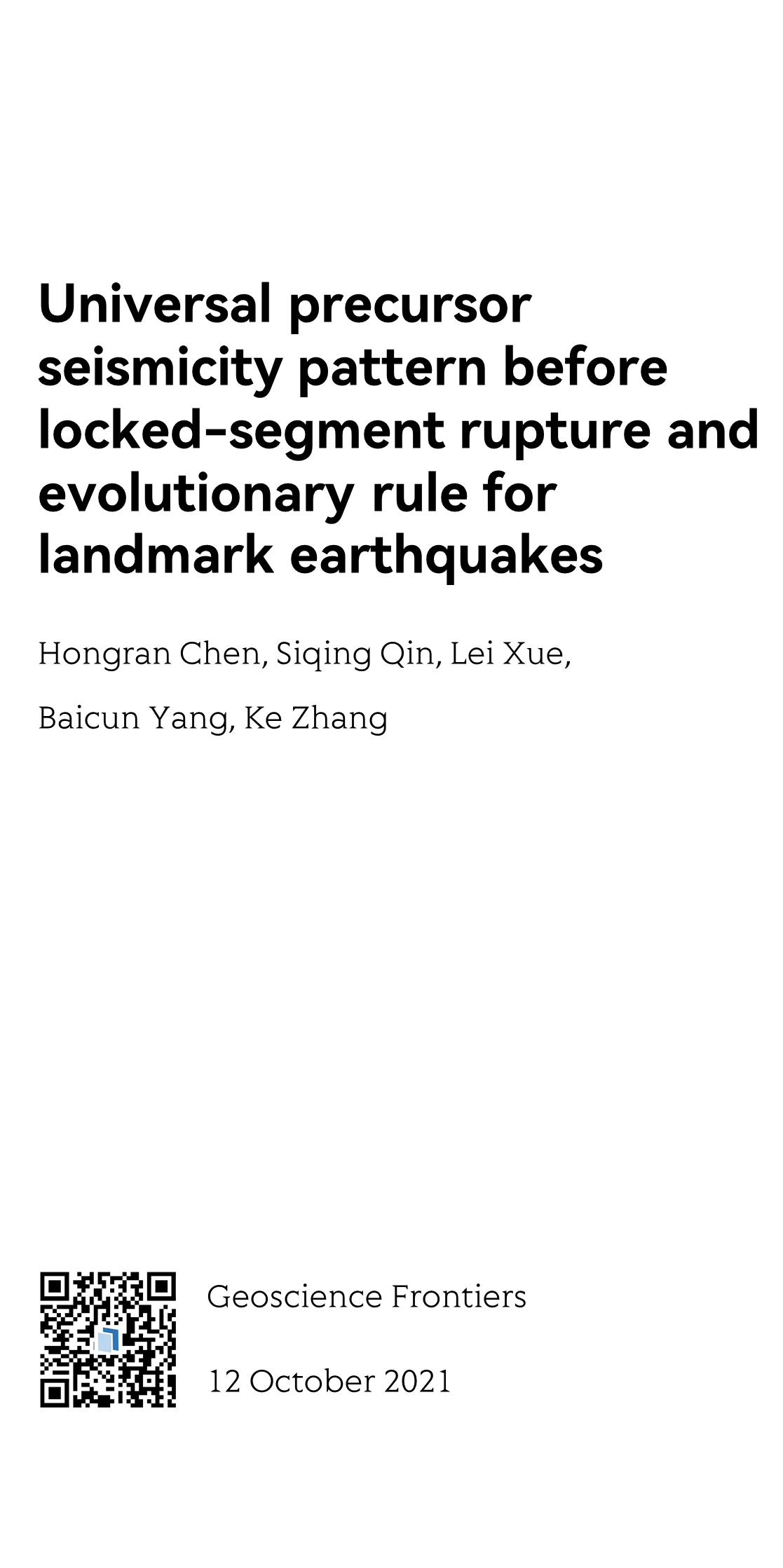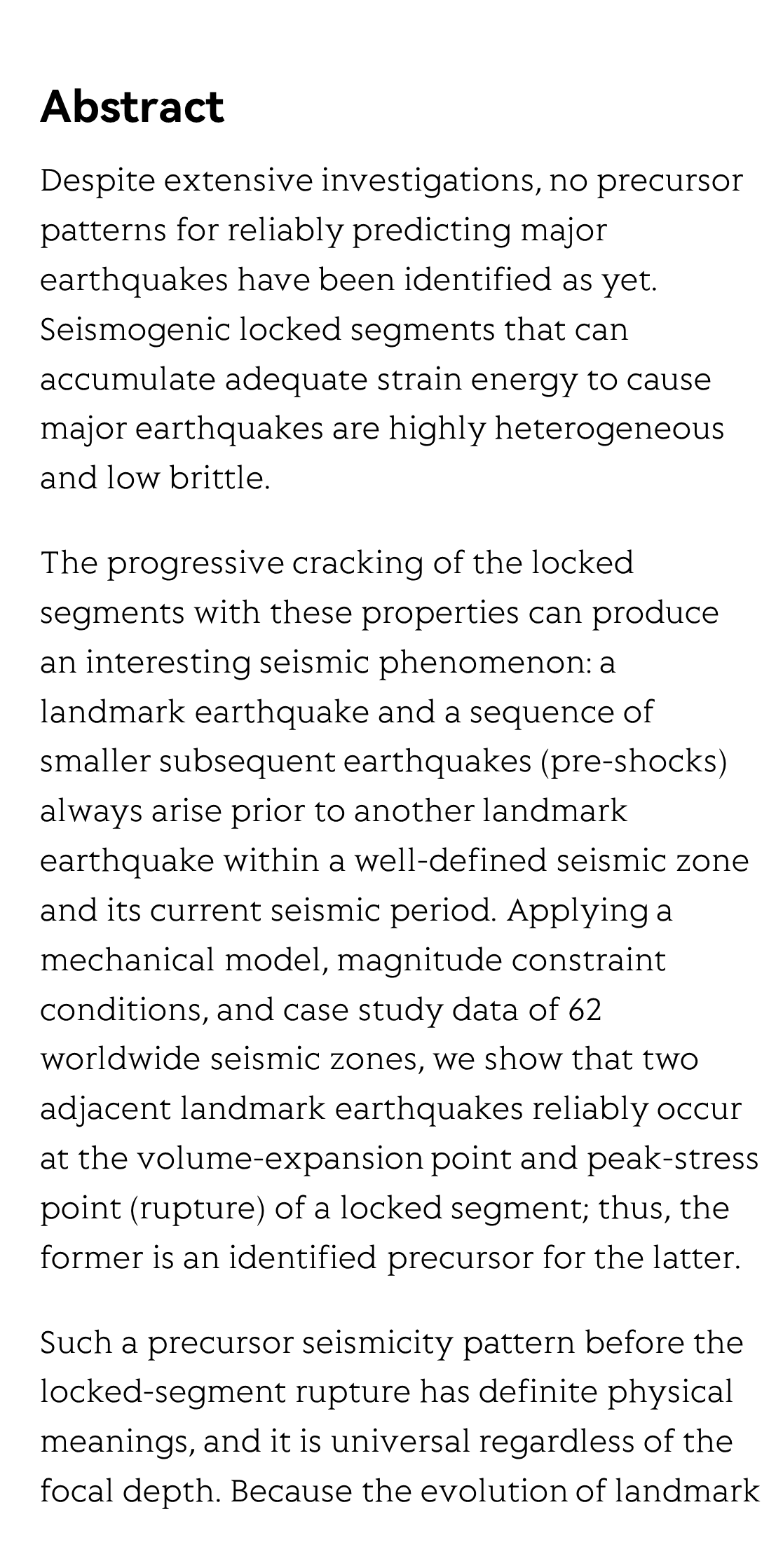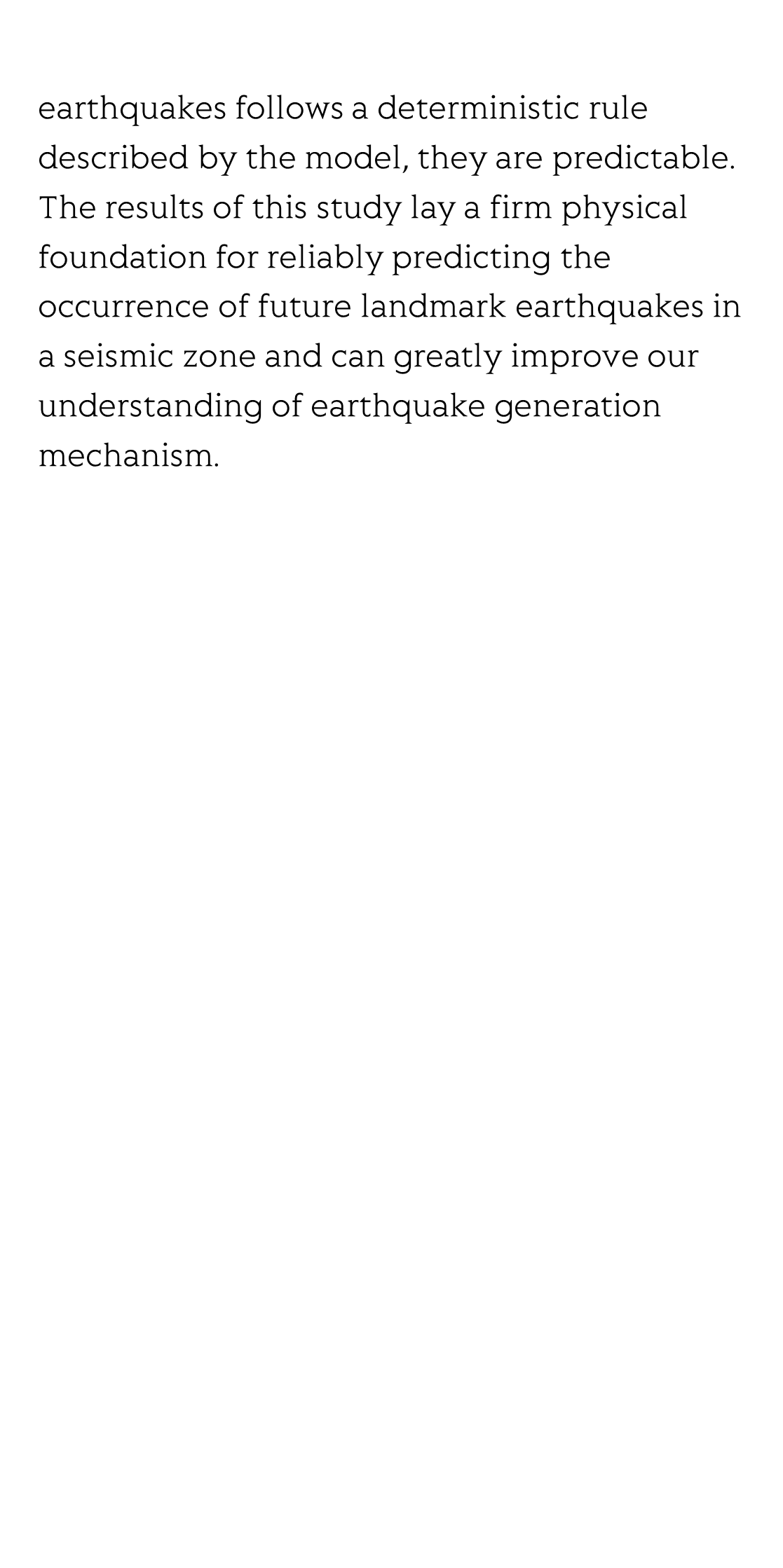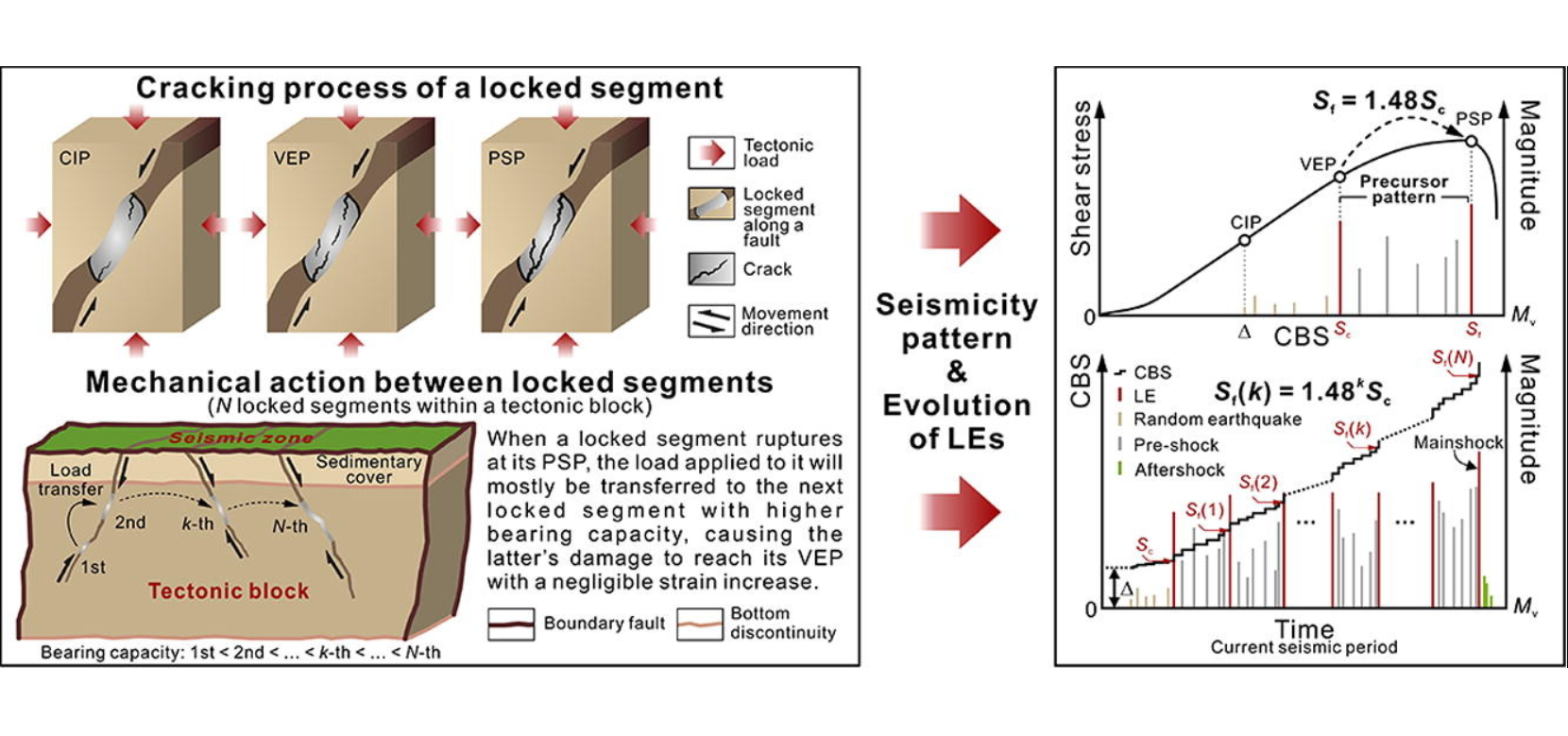(Peer-Reviewed) Universal precursor seismicity pattern before locked-segment rupture and evolutionary rule for landmark earthquakes
Hongran Chen 陈竑然 ¹ ², Siqing Qin 秦四清 ¹ ² ³, Lei Xue 薛雷 ¹ ², Baicun Yang 杨百存 ⁴, Ke Zhang 张珂 ¹ ² ³
¹ Key Laboratory of Shale Gas and Geoengineering, Institute of Geology and Geophysics, Chinese Academy of Sciences, China
中国 中国科学院地质与地球物理研究所 岩气与地质工程重点实验室
² Innovation Academy for Earth Science, CAS, China
中国 中国科学院地球科学研究院
³ College of Earth and Planetary Sciences, University of Chinese Academy of Sciences, China
中国 中国科学院大学地球与行星科学学院
⁴ School of Resources and Civil Engineering, Northeastern University, China
中国 东北大学资源与土木工程学院
Abstract
Despite extensive investigations, no precursor patterns for reliably predicting major earthquakes have been identified as yet. Seismogenic locked segments that can accumulate adequate strain energy to cause major earthquakes are highly heterogeneous and low brittle.
The progressive cracking of the locked segments with these properties can produce an interesting seismic phenomenon: a landmark earthquake and a sequence of smaller subsequent earthquakes (pre-shocks) always arise prior to another landmark earthquake within a well-defined seismic zone and its current seismic period. Applying a mechanical model, magnitude constraint conditions, and case study data of 62 worldwide seismic zones, we show that two adjacent landmark earthquakes reliably occur at the volume-expansion point and peak-stress point (rupture) of a locked segment; thus, the former is an identified precursor for the latter.
Such a precursor seismicity pattern before the locked-segment rupture has definite physical meanings, and it is universal regardless of the focal depth. Because the evolution of landmark earthquakes follows a deterministic rule described by the model, they are predictable. The results of this study lay a firm physical foundation for reliably predicting the occurrence of future landmark earthquakes in a seismic zone and can greatly improve our understanding of earthquake generation mechanism.
Flicker minimization in power-saving displays enabled by measurement of difference in flexoelectric coefficients and displacement-current in positive dielectric anisotropy liquid crystals
Junho Jung, HaYoung Jung, GyuRi Choi, HanByeol Park, Sun-Mi Park, Ki-Sun Kwon, Heui-Seok Jin, Dong-Jin Lee, Hoon Jeong, JeongKi Park, Byeong Koo Kim, Seung Hee Lee, MinSu Kim
Opto-Electronic Advances
2025-09-25
Dual-frequency angular-multiplexed fringe projection profilometry with deep learning: breaking hardware limits for ultra-high-speed 3D imaging
Wenwu Chen, Yifan Liu, Shijie Feng, Wei Yin, Jiaming Qian, Yixuan Li, Hang Zhang, Maciej Trusiak, Malgorzata Kujawinska, Qian Chen, Chao Zuo
Opto-Electronic Advances
2025-09-25







